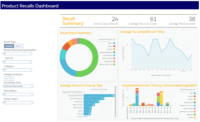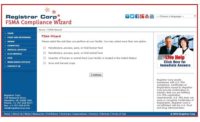The Food Safety Modernization Act (FSMA) represents the most sweeping change to food safety laws in more than 70 years. The changes aim to enhance the atmosphere of food safety and require a culture change for most food producers, while providing consumers with important safeguards to enhance confidence in our food system.
But, now that the FSMA deadline has arrived, there is much anticipation and uncertainty about meeting compliance. The proposed rules for food establish new requirements for facilities that manufacture, process, pack or store food for human or animal consumption. Once the final rules are published, food facilities will have 1-3 years to comply, depending on the size of the business.
It is time to understand what programs you have in place, assemble your internal teams, identify gaps that exist and prioritize issues based on available resources. With that in mind, here are some helpful tips to jump-start your FSMA preparation efforts:
Establish your FSMA implementation team. Regardless of the size of a company, implementing a FSMA compliance team requires a leadership vision that sets the tone for the organization’s culture and strategy, and provides the discipline needed to implement a sustainable process. Under top management, a team should be formed that is multi-functional and includes members with experience in operations, food safety, legal, IT, supply chain, engineering and marketing, all led by a senior staff member.
The best performing food processors are fully re-examining which compliance and risk management activities they perform and how they are performed—not just within the risk and compliance departments, but also across the seams of the organization. These organizations encourage active participation with a commitment for change and improvement at all levels.
Get educated on what’s required. There are seven key regulations under FSMA that have been proposed. The requirements differ depending on if you are a food retailer or a supplier, and if the products you sell are domestically produced or internationally sourced. Do not limit compliance efforts to just equipment and process changes—you also must train your employees. Ensure team members understand all regulations and have measures in place to encourage active participation.
There are also several ways to conduct FSMA compliance training—in-person classes, online classes or a combination of both. Compliance training should not be thought of as just “training” because it’s really about training and awareness. It’s important to set aside some time on a regular basis for employees to review FSMA compliance information relevant to their jobs.
Evaluate your current systems and processes. Some questions to consider—Are processes being followed? Is monitoring and documentation accurate? Are you able to evaluate trends and document corrective actions? Do you have adequate record-keeping policies in place?
Improve system capabilities to electronically track food production from raw materials to the finished product to provide the best insight into how the food product was manufactured. Real-time predictive analytics are vital to help food manufacturers understand what could happen based on trends or if there are parameter changes, providing critical decision support to foresee issues before an event occurs. Going forward, advanced software with predictive analytics may leverage robust modeling engines and multivariate analysis to pre-empt alarm and failure events based on historical models.
No need to wait. There is no need to wait for the FDA to demand that you take action. Many of the requirements of FSMA are already in place, and if you are involved in the production or sale of food, it’s in your best interest to act now. You don’t want to rely on the regulators to ensure the safety of your products. Implement a compliance program now and establish, monitor and maintain protocols for identifying food hazards or defects in a timely manner. Successful plans give companies the ability to act quickly when receiving information about a possible hazard.
Building a food supply chain that protects your brand’s reputation from risk is more important now than ever before. Having a well-documented food safety plan and the collection and basic analysis of data are necessary first steps. Connecting food safety and quality data, coupled with operational data, is crucial to gain insights and draw never-before-seen correlations into what’s really happening on the manufacturing floor.
Remember, things usually don’t work out exactly as planned, so be flexible and don’t be afraid to make changes to your regulation implementation process as needed. The key is to re-evaluate, adjust and repeat.




